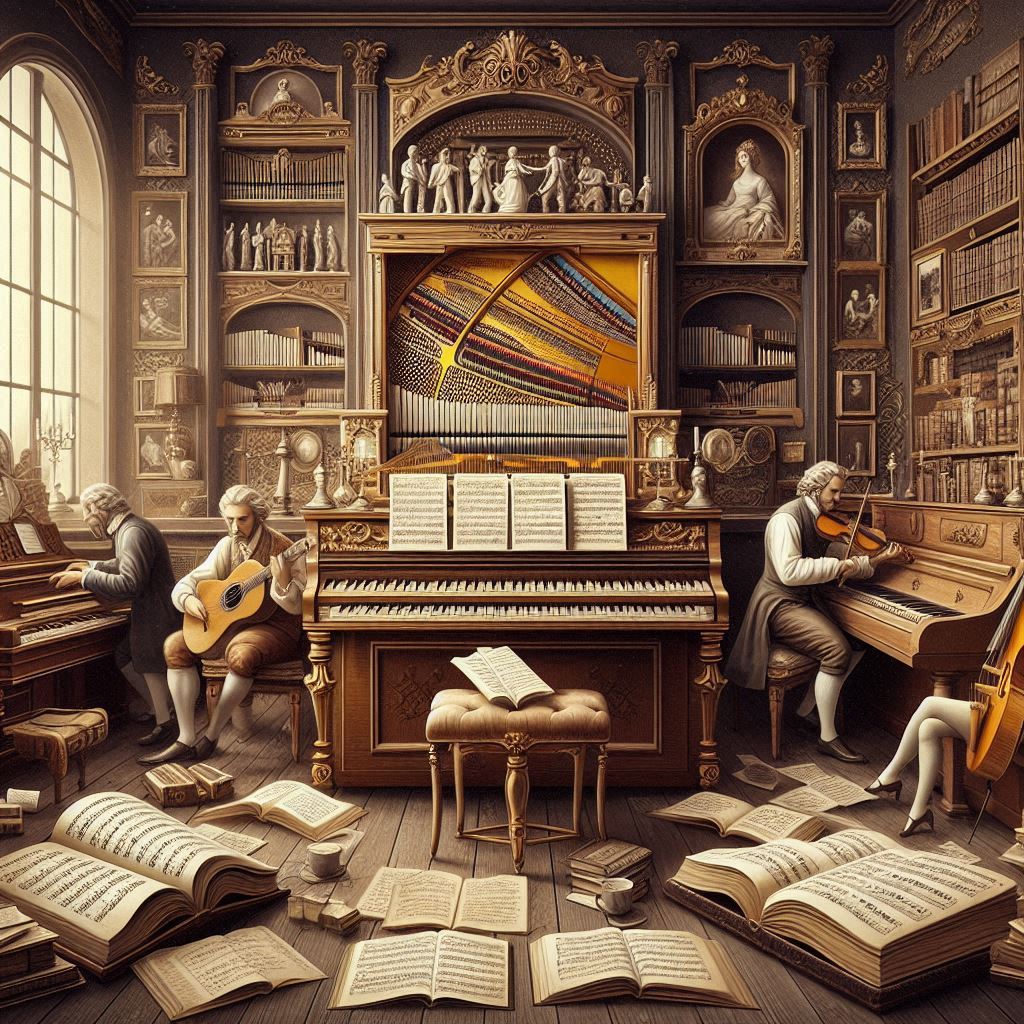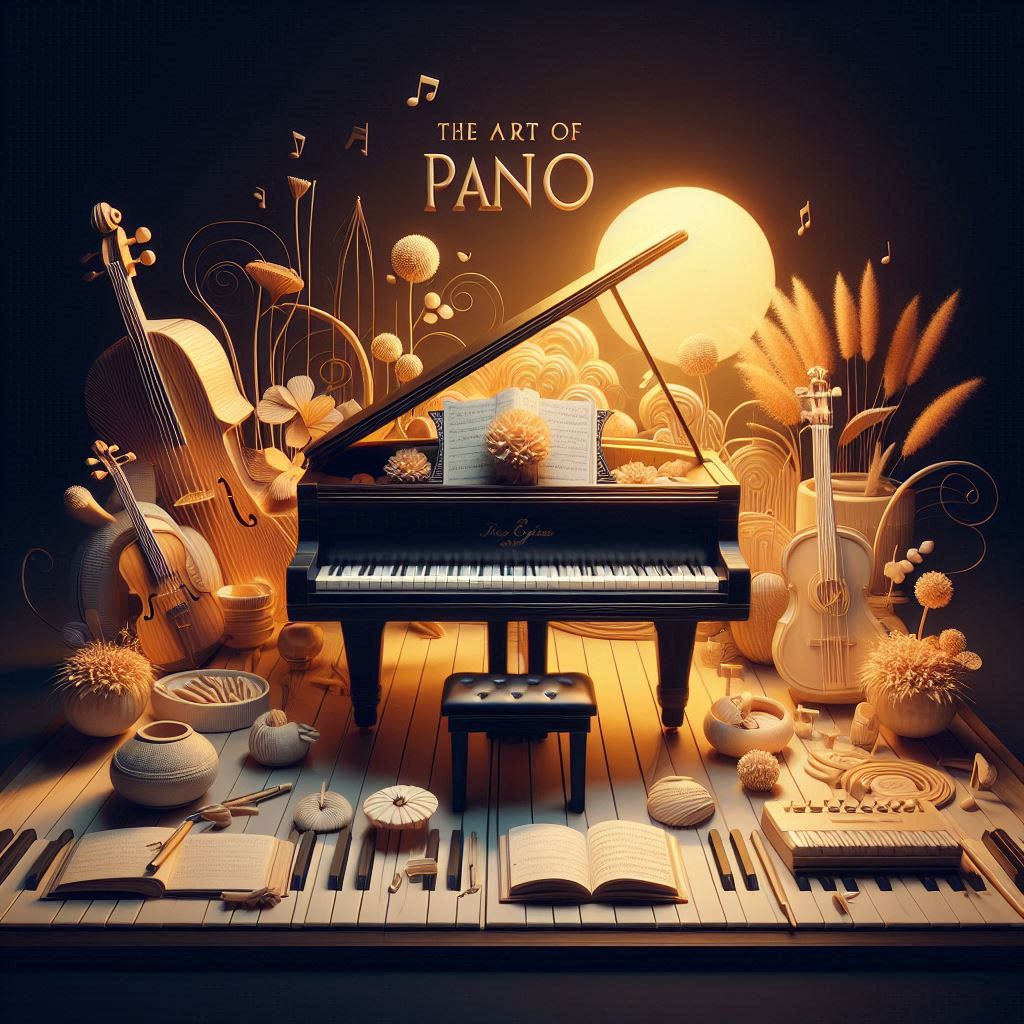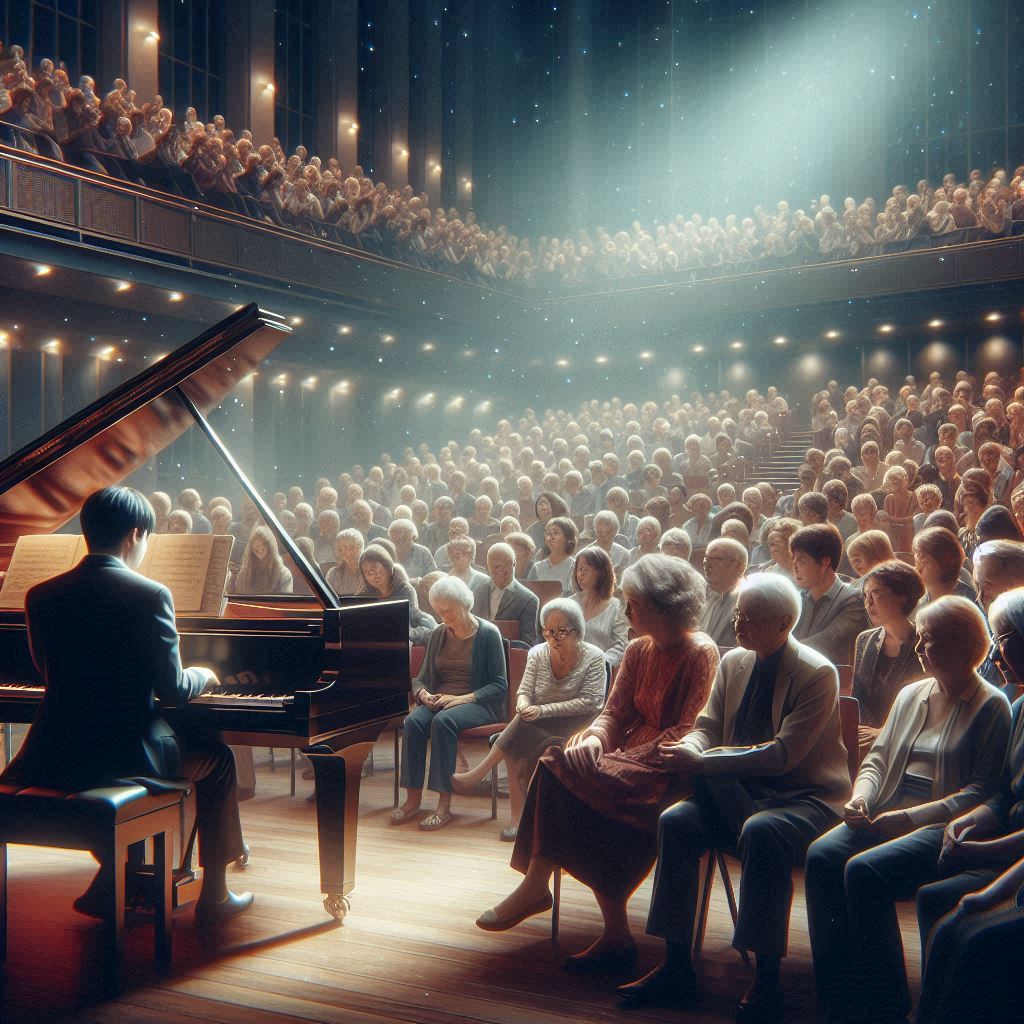Introduction
The piano, a staple in classical and contemporary music, has a rich history that spans several centuries. From its humble beginnings as the harpsichord to the sophisticated grand pianos we see today, the evolution of this instrument is a testament to human ingenuity and the ever-changing landscape of musical expression. This article delves into the fascinating history of the piano, exploring its origins, transformations, and the innovations that have shaped its journey.
Origins of Keyboard Instruments
Ancient Beningsgin
The concept of keyboard instruments can be traced back to ancient Greece, where the hydraulis, an early type of pipe organ, was developed. This instrument used water pressure to push air through pipes, creating sound. Although it bore little resemblance to the piano, it laid the groundwork for future keyboard instruments.
Medieval Innovations
During the medieval period, the organ began to evolve. By the 12th century, organs with a range of notes and keys were being constructed, paving the way for more complex keyboard instruments.
The Emergence of the Harpsichord
Development in the 14th Century
The harpsichord, one of the most significant predecessors of the piano, emerged in the 14th century. Unlike the piano, which uses hammers to strike strings, the harpsichord plucked its strings with quills, producing a distinctive, bright sound.
Role in Baroque Music
By the Baroque era, the harpsichord had become a central instrument in Western music. Composers like Johann Sebastian Bach and George Frideric Handel wrote extensively for the harpsichord, showcasing its capabilities and solidifying its place in musical history.
Transition to the Piano
Invention of the Fortepiano
In the early 18th century, Bartolomeo Cristofori, an Italian instrument maker, invented the fortepiano. Unlike the harpsichord, the fortepiano used hammers to strike the strings, allowing for dynamic variation in volume based on the player’s touch. This innovation marked the birth of the piano as we know it.
Adoption and Evolution
The fortepiano quickly gained popularity among musicians and composers. Its ability to produce a wider range of dynamics made it an appealing choice for expressing more nuanced musical ideas. Over time, improvements in materials and construction techniques led to the development of the modern piano.
The Classical Era and the Piano’s Rise
Mozart and Beethoven
Composers like Wolfgang Amadeus Mozart and Ludwig van Beethoven were instrumental in the piano’s rise to prominence. Their compositions for the piano pushed the instrument to its limits and showcased its expressive potential.
Technological Advancements
During the classical era, piano makers continued to innovate. The addition of a sustain pedal, the expansion of the keyboard range, and the improvement of the hammer mechanism all contributed to the piano’s evolving sound and versatility.
The Romantic Era and the Piano’s Golden Age
Virtuosity and Innovation
The 19th century, often referred to as the piano’s golden age, saw the rise of virtuoso pianists like Franz Liszt and Frederic Chopin. These composers and performers pushed the boundaries of what was possible on the piano, creating technically demanding pieces that showcased their incredible skill.
Improvements in Design
Piano manufacturers such as Steinway & Sons made significant advancements in piano design during this period. Innovations like the cast-iron frame and cross-stringing improved the instrument’s durability and sound quality, making it more robust and resonant.
The Modern Piano
20th Century Innovations
The 20th century brought further innovations to the piano. The advent of electric and digital pianos provided musicians with new ways to create and manipulate sound. These instruments offered the convenience of portability and the ability to mimic a variety of tones.
Contemporary Uses
Today, the piano is used in a wide range of musical genres, from classical to jazz to pop. Its versatility and expressive range continue to make it a beloved instrument for musicians and listeners alike.
Famous Piano Makers and Brands
Steinway & Sons
Founded in 1853, Steinway & Sons is renowned for its high-quality pianos. Their instruments are favored by concert pianists and institutions around the world for their rich tone and exceptional craftsmanship.
Yamaha and Kawai
Japanese manufacturers Yamaha and Kawai have also made significant contributions to the piano industry. Known for their reliable and innovative designs, these brands offer a wide range of acoustic and digital pianos.
The Impact of the Piano on Music Education
A Tool for Learning
The piano has long been a staple in music education. Its layout makes it an excellent tool for teaching music theory, and its versatility allows students to explore various styles and techniques.
Inspiring Creativity
Learning to play the piano can inspire creativity and foster a lifelong appreciation for music. Many musicians start their journey with the piano, developing skills that translate to other instruments and musical endeavors.
Cultural Significance of the Piano
In Popular Culture
The piano has a prominent place in popular culture, appearing in films, television shows, and literature. Iconic scenes featuring piano performances have left a lasting impact on audiences worldwide.
Symbol of Elegance
The piano is often seen as a symbol of elegance and sophistication. Grand pianos, in particular, are associated with formal events and prestigious concert halls, adding a touch of class to any setting.
The Future of the Piano
Technological Integration
As technology continues to advance, the piano is likely to evolve further. Innovations such as artificial intelligence and virtual reality may open new possibilities for piano performance and education.
Sustainability in Piano Manufacturing
With growing awareness of environmental issues, piano manufacturers are exploring sustainable practices. From sourcing eco-friendly materials to improving manufacturing processes, the future of piano making may be greener.
FAQs
How did the piano originate?
The piano originated from earlier keyboard instruments like the harpsichord and clavichord. It was invented by Bartolomeo Cristofori in the early 18th century.
What is the difference between a harpsichord and a piano?
The main difference is in how they produce sound. A harpsichord plucks strings with quills, while a piano strikes strings with hammers, allowing for dynamic variation in volume.
Who were some famous composers for the piano?
Famous composers include Wolfgang Amadeus Mozart, Ludwig van Beethoven, Frederic Chopin, and Franz Liszt, all of whom significantly contributed to the piano repertoire.
What innovations did Steinway & Sons bring to piano design?
Steinway & Sons introduced innovations such as the cast-iron frame and cross-stringing, which improved the durability and sound quality of pianos.
How has the digital age impacted the piano?
The digital age has introduced electric and digital pianos, which offer portability, versatility, and the ability to produce a variety of sounds and effects.
What role does the piano play in music education?
The piano is a fundamental tool in music education, helping students learn music theory, develop technical skills, and explore different musical styles.
Conclusion
The history of the piano is a captivating journey from the early keyboard instruments of ancient civilizations to the sophisticated and versatile pianos of today. This evolution reflects not only technological advancements but also the changing tastes and artistic ambitions of musicians over the centuries. Whether in a grand concert hall or a humble home, the piano continues to inspire and bring joy to countless people around the world.



